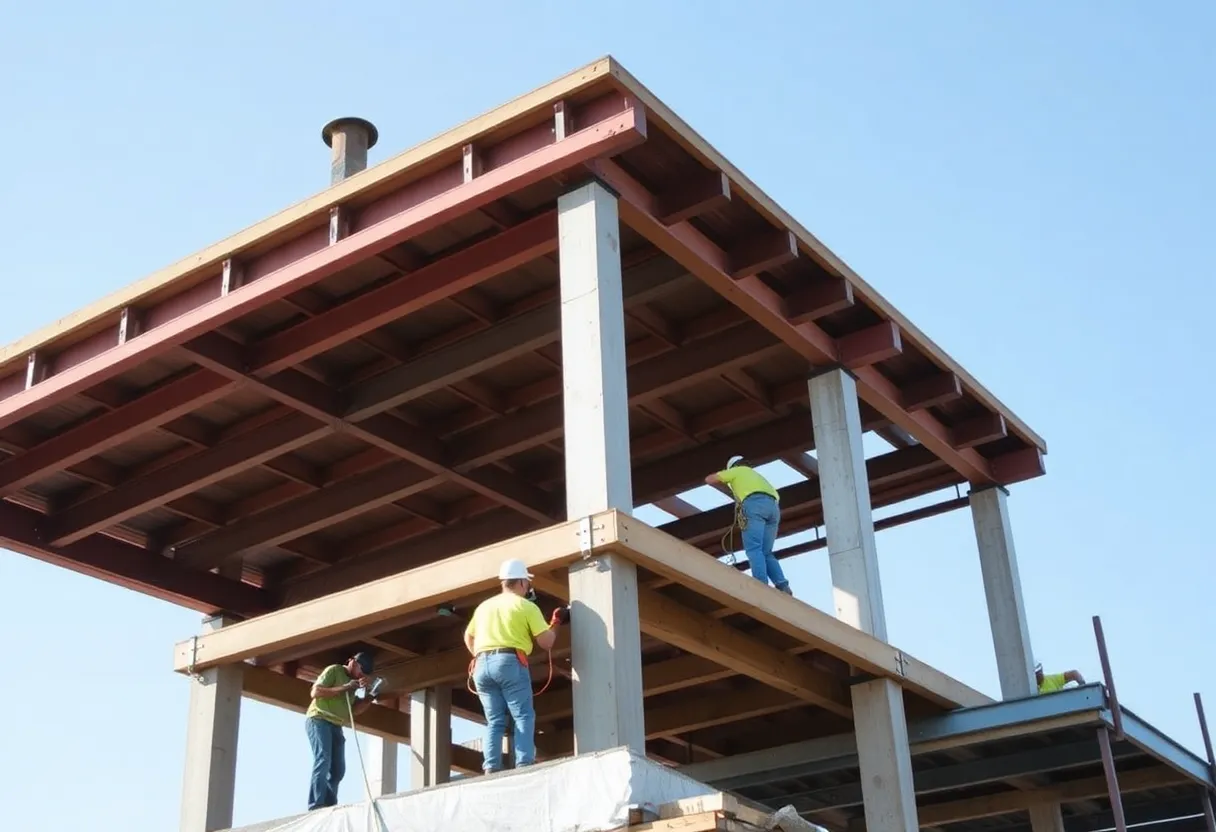United States, August 14, 2025
News Summary
The U.S. construction industry confronts significant challenges as it grapples with rising costs, labor shortages, and economic uncertainty while facing strong demand for housing and infrastructure. Despite a workforce of over 8 million and a projected growth rate of 5.6% in employment, structural issues hinder the industry’s ability to meet demands. The sector experiences remarkable wage growth, particularly in specialized positions, but the lack of support systems like childcare remains a barrier to full participation in the economy. The industry must adapt to these complexities to foster sustainable growth.
The U.S. Construction Industry Faces New Challenges and Opportunities Amid High Demand
The U.S. construction industry finds itself in a state of significant uncertainty as we move through 2025. Despite a strong demand for new housing and infrastructure, rising costs and labor shortages are hindering progress. The persistent housing shortages combined with federal investments continue to drive demand; however, the industry’s ability to meet this demand is becoming increasingly challenging.
Recent trends show that construction spending has begun to slow down, largely influenced by higher interest rates and economic uncertainty. As a result, the number of construction jobs has also been affected. According to the Bureau of Labor Statistics, construction employment reached over 8 million by the end of 2024, making up 6.1% of private-sector employment. Yet, this figure reflects a sector still recovering from the Great Recession, as it has not yet returned to pre-2008 levels, having previously collapsed to only 4.8% of private-sector jobs in early 2011.
Diverse Workforce Composition
The construction workforce is made up of a variety of occupations. Among them, laborers comprise 11.0%, with first-line supervisors at 7.7% and carpenters at 7.3%. Other prevalent jobs include electricians (7.2%), plumbers (4.6%), and HVAC technicians (3.7%). Additionally, construction managers and general operations managers each represent 3.4% of the workforce, while project managers account for 2.7%.
Geographically, the distribution of construction workers varies significantly. States like Wyoming, Utah, and Idaho show the highest concentration of construction workers, boasting 11.0%, 9.5%, and 9.3%, respectively. This trend can be observed throughout the Mountain West states, which rank among the top ten for construction employment as a share of total jobs, driven primarily by a surge in housing and infrastructure developments.
Employment Projections and Wage Growth
Looking ahead, construction employment is projected to grow by 5.6% from 2023 to 2033, outpacing the average growth rate for all occupations, which stands at 4.0%. This growth comes at a time when construction workers earn a national median wage of $58,360 annually. This figure represents an 18% premium over the overall median wage in the U.S.
In the past two years, wages in the construction sector have risen by 15.4%, a stark contrast to the 6.9% wage growth seen in other occupations. Among the states, Illinois emerges as the best-paying for construction workers, with an adjusted median annual wage of $79,328. Other Midwestern states like Minnesota ($70,923) and North Dakota ($68,859) also feature prominently as high-paying options for construction workers.
Challenges Ahead
As the demand for construction services continues to rise, the ongoing labor market tightness has led to strong wage growth, especially for specialized positions. In places like Montana, the emphasis on recruiting skilled workers is vital for supporting economic growth, with the state needing to attract 1,000 new construction workers annually for the next eight years. This need is felt across various sectors, as 96% of contractors in Montana report having open positions, with focus on craft roles such as operators and mechanics.
Despite these opportunities, challenges persist. Insufficient childcare facilities have hindered nearly 70,000 workers from fully participating in Montana’s economy. On a broader level, while the labor force in the state has reached a new record with over 10,000 individuals joining in the past year, it highlights the growing demand for skilled labor amid constraining logistical challenges.
FAQ Section
What are the current challenges facing the U.S. construction industry?
The industry is grappling with rising costs, labor shortages, and economic uncertainty which have impacted construction spending and employment levels.
How many people are employed in the construction sector?
As of the end of 2024, there are over 8 million construction workers in the U.S., accounting for 6.1% of private-sector jobs.
What is the projected growth rate for construction employment?
The construction employment is projected to grow by 5.6% from 2023 to 2033, which is higher than the average for all occupations.
What are the average wages for construction workers?
The national median wage for construction workers is $58,360 annually, which is 18% higher than the overall median wage in the U.S.
Summary of Key Features
| Feature | Details |
|---|---|
| Current Challenges | Rising costs, labor shortages, economic uncertainty impacting spending. |
| Employment Statistics | Over 8 million employed, representing 6.1% of private-sector jobs. |
| Projected Growth Rate | 5.6% growth from 2023 to 2033. |
| Median Wage | $58,360 annually, which is 18% higher than the national average. |
Deeper Dive: News & Info About This Topic
Additional Resources
- KULR8: Construction Industry Employs 8.7% of Montana Workers
- Montana Right Now: Montana Construction Workers Earn 12th Most in U.S.
- Business Insider: Montana Contractors Face Labor Shortage
- KULR8: Best Paying Construction Professions in Montana
- Wikipedia: Construction Industry
Author: Construction FL News
The FLORIDA STAFF WRITER represents the experienced team at constructionflnews.com, your go-to source for actionable local news and information in Florida and beyond. Specializing in "news you can use," we cover essential topics like product reviews for personal and business needs, local business directories, politics, real estate trends, neighborhood insights, and state news affecting the area—with deep expertise drawn from years of dedicated reporting and strong community input, including local press releases and business updates. We deliver top reporting on high-value events such as the Florida Build Expo, major infrastructure projects, and advancements in construction technology showcases. Our coverage extends to key organizations like the Associated Builders and Contractors of Florida and the Florida Home Builders Association, plus leading businesses in construction and legal services that power the local economy such as CMiC Global and Shutts & Bowen LLP. As part of the broader network, including constructioncanews.com, constructionnynews.com, and constructiontxnews.com, we provide comprehensive, credible insights into the dynamic construction landscape across multiple states.





